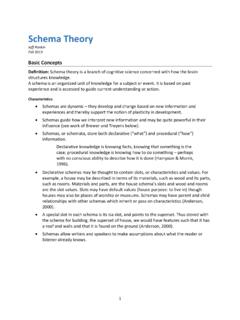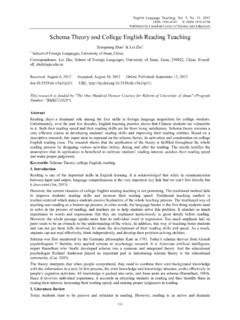Transcription of Levels of Processing: A Framework for Memory Research 1
1 JOURNAL OF VERBAL LEARNING AND VERBAL BEHAVIOR 11, 671-684 (1972) Levels of Processing: A Framework for Memory Research 1 FERGUS I. M. CRAIK AND ROBERT S. LOCKHART University of Toronto, Toronto 181, Ontario, Canada This paper briefly reviews the evidence for multistore theories of Memory and points out some difficulties with the approach. An alternative Framework for human Memory Research is then outlined in terms of depth or Levels of processing. Some current data and arguments are reexamined in the light of this alternative Framework and implications for further Research considered. Over the past decade, models of human Memory have been dominated by the concept of stores and the transfer of information among them.
2 One major criterion for distin- guishing between stores has been their different retention characteristics. The temporal pro- perties of stored information have, thus, played a dual role: Besides constituting the basic phenomenon to be explained, they have also been used to generate the theoretical constructs in terms of which the explanation is formulated. The apparent circularity has been avoided by the specification of additional properties of the stores (such as their capacity and coding characteristics) thereby character- izing them independently of the phenomena to be explained. The constructs, thus formu- lated, have been used to account for data across a variety of paradigms and experimental conditions.
3 The essential concept underlying such explanations is that of information being transferred from one store to another, and the store-to-store transfer models may be distin- guished, at least in terms of emphasis, from explanations which associate different reten- tion characteristics with qualitative changes in the Memory code. In the present paper we will do three things: (a) examine the reasons for proposing multi- a This Research was supported by Grants A8261 and A0355 from the National Research Council of Canada to the first and second author, respectively. We thank our colleagues who read a preliminary version of the paper and made many helpful suggestions. "2opyright 1972 by Academic Press, Inc.
4 All rights of reproduction in any form reserved. store models, (b) question their adequacy, and (c) propose an alternative Framework in terms of Levels of processing. We will argue that the Memory trace can be understood as a by- product of perceptual analysis and that trace persistence is a positive function of the depth to which the stimulus has been analyzed. Stimuli may also be retained over short inter- vals by continued processing at a constant depth. These views offer a new way to interpret existing data and provide a heuristiciframe- work for further Research . MULTISTORE MODELS The Case in Favor When man is viewed as a processor of in- formation (Miller, 1956; Broadbent, 1958), it seems necessary to postulate holding mechan- isms or Memory stores at various points in the system.
5 For example, on the basis of his dichotic listening studies, Broadbent (1958) proposed that information must be held transiently before entering the limited-capacity processing channel. Items could be held over the short term by recycling them, after perception, through the same transient storage system. From there, information could be transferred into and retained in a more permanent long-term store. Broadbent's ideas have been developed and extended by Waugh and Norman (1965), Peterson (1966), and Atkinson and Shiffrin (1968). According to the modal model (Murdock, 1967), it is now 671 672 CRAIK AND LOCKHART widely accepted that Memory can be classified into three Levels of storage: sensory stores, short-term Memory (STM) and long-term Memory (LTM).
6 Since there has been some ambiguity in the usage of terms in this area, we shall follow the convention of using STM and LTM to refer to experimental situations, and the terms "short-term store" (STS) and "long-term store" (LTS) to refer to the two relevant storage systems. Stimuli can be entered into the sensory stores regardless of whether or not the subject is paying attention to that source; that is, sensory stores are "preattentive" (Neisser, 1967). The input is represented in a rather literal form and can be overwritten by further inputs in the same modality (Neisser, 1967; Crowder & Morton, 1969). Further features which distinguish the sensory registers from later st~bres are the modality-specific nature and moderately large capacity of sensory stores and the transience of their contents.
7 AtteOtion to the material in a sensoryregister is equivalent to reading it out and transferring it to STS. Here, verbal items are coded in some phonemic fashion (Shulman, 1971) or in auditory-verbal-linguistic terms (Atkinson & Shiffrin, 1968). The STS is further distin- guished from sensory memories by virtue of its limited capacity (Miller, 1956; Broadbent, 1958), by the finding that information is lost principally by a process of displacement (Waugh & Norman, 1965), and by the slower rate of forgetting from STS: 5-20 seconds as opposed to the 1-2-second estimates for sensory storage. While most Research has concentrated on verbal STS, there is evidence that more literal "representational" inform- ation may also be held over the short term (Posner, 1967), although the relationship between such modality-specific stores and the verbal STS has not been made clear.
8 The distinctions between STS and LTS are well-documented. Whereas STS has a limited capacity, LTS has no known limit; verbal items are usually coded phonemically in STS but largely in terms of their semantic features in LTS (Baddeley, 1966); forgetting from STS is complete within 30 seconds or less while forgetting from LTS is either very slow or the material is not forgotten at all (Shiffrin & Atkinson, 1969). In the free-recall paradigm, it is generally believed that the last few items are retrieved from STS and prior items are retrieved from LTS; it is now known that several variables affect one of these retrieval TABLE 1 COMMONLY ACCEPTED DIFFERENCES BETWEEN THE THREE STAGES OF VERBAL Memory (SEE TEXT FOR SOURCES)
9 Feature Sensory registers Short-term store Long-term store Entry of information Maintenance of information Format of information Capacity Information loss Trace duration Retrieval Preattentive Requires attention Not possible Continued attention Rehearsal Literal copy of input Phonemic Probably visual Possibly semantic Large Small Decay Displacement Possibly decay k-2 Seconds Up to 30 seconds Readout Probably automatic Items in consciousness Temporal/phonemic cues Rehearsal Repetition Organization Largely semantic Some auditory and visual No known limit Possibly no loss Loss of accessibility or discriminability by inter- ference Minutes to years Retrieval cues Possibly search process Levels OF PROCESSING 673 components without affecting the other (Glanzer, 1972).
10 Further persuasive evidence for the STS/LTS dichotomy comes from clinical studies (Milner, 1970; Warrington, 1971). The distinguishing features of the three storage Levels are summarized in Table I. The attractiveness of the "box" approach is not difficult to understand. Such multistore models are apparently specific and concrete; information flows in well-regulated paths between stores whose characteristics have intuitive appeal; their properties may be elicited by experiment and described either behaviorally or mathematically. All that remains, it seems, is to specify the properties of each component more precisely and to work out the transfer functions more accurately. Despite all these points in their favor, when the evidence for multistore models is examined in greater detail, the stores become less tangible.

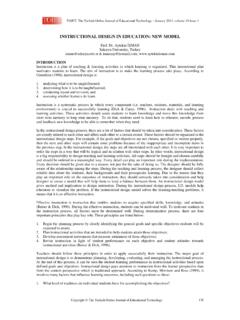
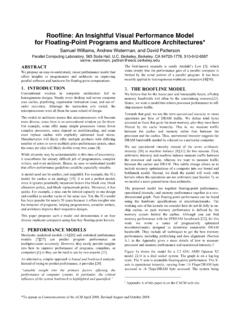
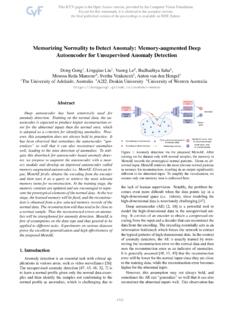
![arXiv:1402.1128v1 [cs.NE] 5 Feb 2014](/cache/preview/f/d/1/e/b/f/3/0/thumb-fd1ebf3035d443b1c7cdc82011fc710a.jpg)
